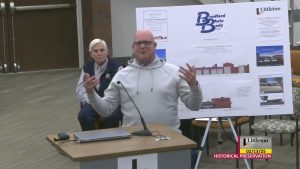Gas station development has come a long way since the early days of the petroleum industry. Today, sustainable practices are at the forefront of gas station development, with innovative solutions being implemented to reduce environmental impact and increase efficiency.
With the global push towards sustainability, gas station development has also evolved to meet the changing needs of consumers and the environment. Eco-friendly gas stations have emerged as a key aspect of sustainable development, offering reduced carbon emissions, energy efficiency, and cost savings.
The Importance of Gas Station Development and Design
Proper gas station development and design are essential to ensure safety, convenience, and efficient fueling. A well-designed gas station not only provides a positive experience for customers but also maximizes the potential for business success.
The Key Elements of Gas Station Design
The key elements of gas station design include:
| Element | Description |
|---|---|
| Fuel Pump Placement | The location and grouping of fuel pumps for optimal traffic flow and maximum convenience for customers. |
| Traffic Flow | The design of the entrance, exit, and circulation pattern for safe and efficient traffic flow. |
| Accessibility | The design of the station to accommodate customers with disabilities and ensure compliance with relevant regulations. |
These elements must be carefully considered and integrated into the design to ensure a successful gas station business.
The Benefits of Professional Gas Station Development
Professional gas station development provides numerous benefits for business owners, including:
- Ensuring compliance with relevant regulations and building codes
- Reducing the risk of costly mistakes and delays
- Optimizing traffic flow and maximizing convenience for customers
- Enhancing the overall aesthetic appeal of the gas station
By working with experienced professionals, gas station owners can ensure that their station is designed and built for optimal success.
Factors to Consider in Gas Station Site Selection
Building a successful gas station business starts with choosing the right location. There are several factors to consider when selecting a gas station site, which will impact the success of your business in the long term.
Location
The location of your gas station is crucial for attracting customers and generating revenue. Ideally, you should choose a site that is easily accessible from major roads and highways, and is visible to passing traffic. A central location with high traffic flow and good visibility is more likely to attract customers.
Traffic Flow
The traffic flow is another important consideration when selecting a gas station site. A site with heavy traffic flow is more likely to generate business, but it is important to ensure that there is ample space for vehicles to enter and exit the gas station safely and easily.
Zoning Regulations
Before selecting a gas station site, it is important to research the local zoning regulations to ensure that the site is suitable for gas station development. This includes checking for any restrictions on fuel storage, building size, and signage, as well as compliance with local environmental regulations.
Environmental Impact
Gas station development can have a significant environmental impact, so it is important to consider the potential environmental consequences of your site selection. This includes assessing the risk of soil or groundwater contamination, as well as the potential impact on nearby water sources or wildlife habitats.
Site Analysis
Conducting a thorough site analysis is crucial to ensuring the viability of your gas station site. This includes assessing the competition in the local area, analyzing local demographics to ensure that your gas station will meet the needs of the local population, and estimating the potential revenue and expenses associated with your gas station business.
By carefully considering these factors when selecting a gas station site, you can increase the chances of building a successful and profitable gas station business that meets the needs of your customers.
Gas Station Project Management
Effective project management is crucial to the success of any gas station development project. It involves the planning, coordination, and monitoring of all aspects of the project, from conception to completion. Gas station project management involves unique challenges that require careful consideration to ensure that the project stays on track, within budget, and meets regulatory compliance requirements.
Challenges in Gas Station Project Management
Gas station project management can be a complex and challenging process. Some of the most common challenges in gas station development include:
- Compliance with regulatory requirements – Gas station projects are subject to a wide range of regulations, including zoning, environmental, and safety regulations. Failure to comply with these regulations can result in costly delays, penalties, and legal issues.
- Budget constraints – Gas station development projects require significant investment, and budget constraints can impact the scope and quality of the project. Effective budget planning and management are critical to ensuring that the project stays within budget and meets the required quality standards.
- Timeline management – Gas station development projects involve multiple stages, including planning, design, construction, and installation of fuel systems and equipment. Effective timeline management is critical to ensuring that the project is completed on time and within budget.
- Stakeholder management – Gas station development projects involve multiple stakeholders, including investors, contractors, vendors, and regulatory agencies. Effective stakeholder management is critical to ensuring that the project runs smoothly and all parties are satisfied with the outcome.
Strategies for Overcoming Project Management Challenges
Effective project management requires careful planning, coordination, and execution. Here are some strategies for overcoming common challenges in gas station development:
- Compliance monitoring – Stay up-to-date with regulatory requirements and engage with regulatory agencies to ensure compliance throughout the project.
- Budget planning and management – Develop a detailed budget plan, consider all expenses, and continuously monitor spending throughout the project to ensure that it stays within budget.
- Timeline management – Develop a detailed timeline, identify critical paths, and monitor progress to ensure the project remains on schedule.
- Stakeholder management – Maintain regular communication with all stakeholders, establish clear expectations and goals, and address any concerns promptly to ensure that all parties are satisfied with the outcome.
Effective project management is essential for the success of any gas station development project. By overcoming the unique challenges of gas station development and implementing effective project management strategies, developers can ensure that their projects are completed on time, within budget, and to the required quality standards.
Gas Station Construction and Development Costs
Gas station development and construction costs can vary widely depending on location, size, and amenities. Below we outline the typical costs associated with gas station construction and development:
| Cost Category | Typical Cost Range |
|---|---|
| Site Preparation | $50,000 – $150,000 |
| Environmental Assessments | $10,000 – $30,000 |
| Fuel System Installation | $50,000 – $200,000 |
| Building Construction | $200,000 – $500,000 |
| Equipment and Fixtures | $50,000 – $100,000 |
Note that these cost estimates are only a rough guide, and costs can vary widely depending on the specifics of your project. Other factors that can influence gas station investment include the brand and size of fuel supplier, the cost of land and labor, and the presence of local incentives or grants for sustainable development.
Reducing Gas Station Development Costs
While gas station development costs can be substantial, there are several strategies for reducing costs while still achieving a high-quality, sustainable project:
- Choose a site with minimal environmental remediation requirements.
- Invest in sustainable design features, such as high-efficiency lighting, HVAC systems, and renewable energy.
- Partner with a reputable fuel supplier who can provide cost-effective fuel pricing and supply, as well as access to incentives and grants.
- Work with an experienced gas station development team who can manage costs and ensure that your project stays on schedule and on budget.
By following these strategies, you can help to ensure that your gas station development project is both sustainable and cost-effective.
Innovative Solutions for Sustainable Gas Station Development
Sustainable gas station development is becoming increasingly important as businesses seek to reduce their environmental footprint and save on costs. Innovative solutions are emerging to address these concerns, from electric vehicle charging stations to solar power and on-site renewable energy generation. Here are some of the latest innovations in gas station development:
| Type of Solution | Description | Potential Benefits |
|---|---|---|
| Solar Power | Installation of solar panels on gas station roofs or canopies to generate electricity. | Reduces reliance on grid power, lowers energy costs, and reduces carbon emissions. |
| Electric Vehicle Charging Stations | Installation of high-speed electric vehicle charging stations that can fully charge a vehicle in minutes. | Attracts electric vehicle drivers to the gas station, increases revenue, and reduces carbon emissions. |
| On-Site Renewable Energy Generation | Installation of renewable energy systems such as wind turbines or biogas generators on the gas station site. | Reduces reliance on grid power, lowers energy costs, and reduces carbon emissions. |
These innovative solutions offer many benefits for gas station owners and the environment. By reducing reliance on traditional energy sources and promoting sustainable practices, gas stations can improve their long-term viability while contributing to a more sustainable future.
The Role of Technology in Gas Station Development
Technology has played a significant role in the evolution of gas station development. With advancements in technology, new and innovative solutions have emerged to improve efficiency and customer experience.
Advanced Fuel Systems
The latest fuel systems are designed with advanced features that ensure proper fuel delivery and tank monitoring. These systems are equipped with automatic shut-off valves that prevent spills in case of a malfunction. In addition, they are connected to a central monitoring system that allows for remote fuel inventory monitoring and ordering.
Payment Systems
Payment systems have also seen significant advancements in recent years. The traditional payment methods, such as cash and credit cards, have been replaced with contactless payment options, such as mobile payment apps and NFC-enabled cards. These systems offer a faster and more secure way to pay for fuel, reducing the risk of fraud and theft.
Security Systems
Security systems are crucial for gas station safety. The latest security systems are equipped with advanced features such as CCTV cameras, automatic alarms, and motion sensors. These systems help to deter theft and vandalism and ensure the safety of customers and staff.
Efficiency and Customer Experience
Technology has also led to improvements in gas station efficiency and customer experience. The latest gas station designs use digital signage to provide customers with real-time information about fuel prices and promotions. In addition, some gas stations have introduced loyalty programs that reward customers with discounts and other benefits.
Overall, technology has been instrumental in improving the gas station industry. With the latest advancements in fuel systems, payment systems, security systems, and digital signage, gas stations can now offer a safe, fast, and convenient experience for customers.
Gas Station Planning and Regulatory Compliance
Gas station planning involves a careful analysis of the site, identification of regulatory requirements, and compliance with zoning, environmental, and safety regulations.
Site Analysis
A thorough site analysis is essential to determine the feasibility of gas station development. Factors such as location, traffic flow, accessibility, and environmental impact should be carefully evaluated. Site analysis can help to identify potential challenges and opportunities and guide decision-making.
Regulatory Requirements
| Regulation Type | Examples |
|---|---|
| Zoning Regulations | Land use restrictions, setback requirements, signage regulations |
| Environmental Regulations | Groundwater protection, soil remediation, spill prevention, air quality |
| Safety Regulations | Fire safety, fuel storage, hazardous materials handling, traffic flow |
Gas station developers must comply with a range of zoning, environmental, and safety regulations at the federal, state, and local levels. Failure to comply with these regulations can result in costly penalties, delays, and legal disputes. It is important to engage with regulatory officials early in the planning process to identify and address any potential compliance issues.
Gas Station Planning Best Practices
- Engage with local regulatory officials early in the planning process
- Conduct a thorough site analysis to identify potential challenges and opportunities
- Consult with experienced gas station development professionals to ensure compliance with regulatory requirements
- Monitor and manage compliance throughout the construction and operation phases
By following best practices for gas station planning and regulatory compliance, developers can avoid costly delays and penalties and ensure a successful project outcome.
Building a Successful Gas Station Business
When it comes to building a successful gas station business, there are several key factors to consider. These include branding, marketing, customer service, and offerings. Here are some tips to help you get started:
Branding
Creating a strong brand is essential for standing out in a crowded market. Your brand should be visually appealing and consistent across all platforms, including your website, social media, and signage. Consider hiring a professional designer to create a logo and other visual elements that represent your brand.
Marketing
Marketing is crucial for attracting new customers and retaining existing ones. Utilize social media, email marketing, and other digital channels to reach your target audience. Consider running promotions or offering loyalty programs to incentivize customers to keep coming back.
Customer Service
Providing excellent customer service is key to building a loyal customer base. Train your staff to greet customers warmly, answer questions, and resolve issues quickly and efficiently. Make sure your store is clean and well-maintained, and consider offering amenities like free Wi-Fi, a restroom, or a coffee station.
Offerings
Offering quality fuel products and convenient store offerings is essential for attracting and retaining customers. Consider partnering with a reputable fuel supplier to ensure the quality of your fuel. Offer a variety of snacks, drinks, and other convenience store items, and consider adding amenities like a car wash, air pump, or vacuum station.
By focusing on these key factors, you can build a successful gas station business that stands out in a competitive market and attracts loyal customers.
Gas Station Development FAQ
Gas station development can be a complex and challenging process. Here are some frequently asked questions to help you better understand the process and make informed decisions:
1. How can I finance a gas station development project?
Financing a gas station development project usually involves obtaining a loan from a bank or other financial institution. It’s important to have a solid business plan and financial projections to demonstrate the viability of the project.
2. How do I choose a fuel supplier?
Choosing a fuel supplier can depend on a variety of factors such as price, the quality of fuel, and the availability of delivery options. Research and compare different fuel suppliers to find the best fit for your business.
3. How can I attract customers to my gas station?
Providing quality fuel products, a clean and well-maintained environment, and convenient amenities such as a convenience store or car wash can attract and retain customers. Effective marketing and branding can also help to increase visibility and customer loyalty.
4. What are some common mistakes to avoid in gas station development?
Common mistakes in gas station development can include inadequate research and analysis of the site selection, poor budgeting and planning, and failure to comply with regulatory requirements. It’s important to work with experienced professionals and follow a comprehensive development plan to avoid costly mistakes.
5. How long does it take to complete a gas station development project?
The timeline for completing a gas station development project can vary depending on the size and complexity of the project, as well as regulatory requirements and other factors. On average, a gas station development project can take anywhere from six months to two years to complete.
6. What are some trends in gas station development?
Some current trends in gas station development include the use of sustainable and eco-friendly solutions such as solar power, electric vehicle charging stations, and on-site renewable energy generation. Additionally, technology is playing an increasingly important role in modern gas station development, such as advanced fuel and payment systems.
By understanding the key aspects of gas station development, you can make informed decisions and build a successful and sustainable business.










